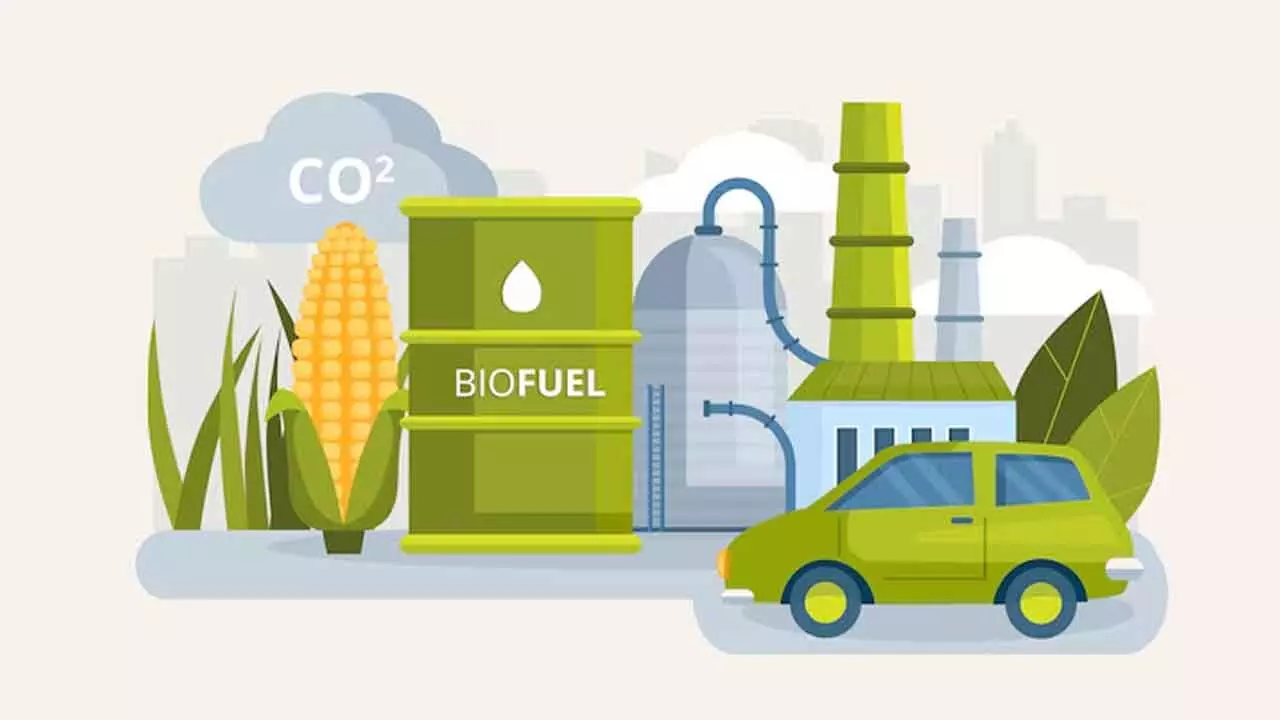Ethanol vs. Advanced Biofuels → Which Options Deliver Better Efficiency and Lower Emissions?
Explore next-gen ethanol alternatives → Butanol, ABE fuels, Biohydrogen, and microalgae-based biodiesel explained.
Next-Generation Fuels → Butanol, Biohydrogen, and Microalgal Biodiesel Under Review

As the world seeks cleaner energy, advanced biofuels such as ★ Butanol, ABE mixtures, Biohydrogen, Biodiesel, and Microalgal fuels are emerging as promising alternatives to ethanol. These options offer higher energy density, lower emissions, and greater compatibility with existing fuel infrastructure — but they also face major economic and sustainability hurdles.
Butanol and ABE Biofuels → High Energy, Complex Processing
Butanol and acetone-butanol-ethanol (ABE) mixtures deliver more energy per litre than ethanol and are produced by solventogenic bacteria like Clostridium beijerinckii. However, recovering multiple solvents is costlier than separating ethanol alone.
Innovative strategies, such as supplementing municipal wastewater with glucose, have boosted butanol output while cutting landfill sludge. Other research explores bacteria like Vibrio furnessi, which directly produce hydrocarbon fuels, and using glycerol byproducts to synthesize liquid alkanes via the Fischer-Tropsch process (300–450 °C, platinum catalyst).
Biohydrogen → Clean Energy Carrier with High Efficiency
The International Energy Agency (IEA) sees hydrogen as central to future decarbonized transport. Hydrogen fuel cells can achieve ~50 % efficiency, far surpassing most combustion engines.
♦ Clostridium and Bacillus bacteria produce hydrogen from waste streams.
♦ Caldicellulosiruptor saccharolyticus achieves up to 92 % of theoretical hydrogen yields using pulp-industry waste.
♦ Photosynthetic cyanobacteria and algae, such as Chlamydomonas reinhardtii, can generate hydrogen for extended periods through modified metabolic pathways, though oxygen sensitivity of hydrogenase enzymes remains a bottleneck.
Biodiesel → Cleaner Than Diesel, But Not Fully Neutral
Biodiesel is derived from plant or animal fats via transesterification with methanol and catalysts like KOH or recyclable resins. While biodiesel cuts CO₂ emissions by ~55 % and reduces SO₂ and particulates, it may raise NOx emissions and produce soot with mutagenic potential.
♦ Jatropha curcas oil (15 % free fatty acids) complicates production through saponification.
♦ Enzymatic transesterification with lipases is greener but expensive due to enzyme instability.
Chemically Synthesised Liquid Fuels → Pyrolysis for Diesel Alternatives
Lignocellulosic biomass can be pyrolyzed into syngas (CO + H₂) and then converted into liquid fuels using transition-metal catalysts. This approach can potentially cut fossil-fuel emissions by 90 %, but production remains costly compared to petroleum fuels.
Microalgal Biodiesel → Ultra-High Productivity, Land-Efficient
Microalgae can produce up to 100× more oil than terrestrial crops and grow in ponds supplied with CO₂ from power plants. Estimates suggest that using only 5 % of U.S. land for algae cultivation could meet global petroleum demand. Species like Chlorella protothecoides accumulate triglycerides under heterotrophic growth, offering fermentation-style oil production.
Sustainability and Policy Challenges → Food vs. Fuel & Carbon Debt
Biofuels face conflicts with agriculture — Brazil, for example, earns more from soybean exports than from soybean biodiesel production. Clearing forest land for fuel crops creates a “carbon debt”:
♦ Corn-ethanol from abandoned cropland → 48-year carbon payback.
♦ Soy biodiesel from rainforest land → 319-year carbon debt.
The U.S. EPA “blend wall” restricts ethanol mixing to curb volatility (Reid Vapour Pressure ↑1 psi), preventing smog-forming ozone. Even the best biofuel systems sequester less CO₂ per hectare than natural afforestation, which can store 2× more carbon over 30 years.

